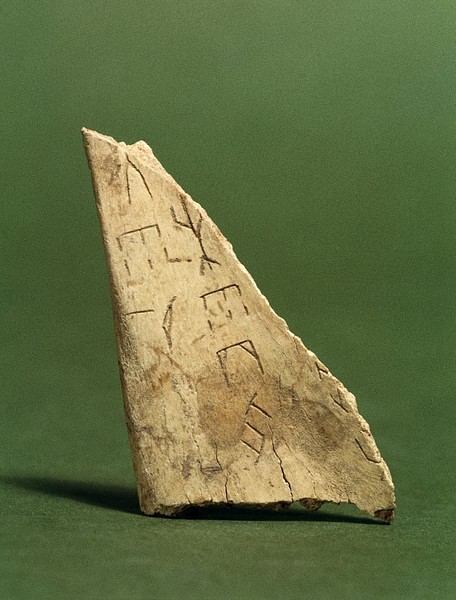
Oracle Bones (also known as Dragon's Bones) were the shoulder blades of oxen or plastrons of turtles (the flat, underside of the turtle's shell) which were used in the Shang Dynasty of China (c. 1600-1046 BCE) for divination. The symbols carved on the bones eventually became words and a recognizable Chinese script developed from this practice.
A fortune-teller would carve (later, paint) symbols on the bones of the ox or the turtle shell, apply a hot poker or fire until the bone or shell cracked, and then interpret the direction of the crack through their drawing to predict the future. Most of the oracle bones discovered come from the Shang Dynasty but some from the early Zhou Dynasty (1046-226 BCE). The practice of telling the future through oracle bones is known as scapulimancy (telling the future through the scapula, the shoulder bone, of an animal), plastromancy (using a turtle's plastron) or pyromancy (the use of fire). These methods all declined when the book known as the I-Ching (a fortune-telling manual which uses hexagrams and yarrow sticks) became more popular in the Zhou Dynasty.
Oracle bones continued to be used in later dynasties but not as regularly as during the Shang. These bones are important primary sources on the history of the Shang Dynasty and gave birth to Chinese script. Historian Harold M. Tanner writes, "oracle bones are the earliest written records of Chinese civilization. The inscriptions give us a highly selective picture of some of the concerns and events that were relevant to the Shang elite.The earliest of these records date to the reign of King Wu Ding in the late Shang (40)." Even though everyone was interested in what the future held, questions from the wealthier classes in China make up the majority of the inscriptions. This is probably because they could afford to consult the psychics more often than the poor.
Use of Oracle Bones
The desire to know the future has been a constant in human history and the people of China during the Shang Dynasty were no different along these lines than people today. Fortune-telling during the Shang Dynasty was considered an important resource in making decisions, and these 'psychics' were consulted by everyone from the farmer to the king. These fortune-tellers were thought to be in touch with the spirit world of the ancestors who lived with the gods and knew the future. These spirits would communicate with the psychics through the oracle bones. Each fortune-teller had his or her area of expertise (love, money, work, etc) but could answer questions on any topic.
Fortune-tellers either got the bones and shells themselves (and prepared them) or bought them from a merchant who scraped and cleaned them. The bones/shells were then kept in the fortune-teller's shop. If someone wanted to know whether they should take their cattle to market, or go visit a friend on a certain date, they would visit a fortune-teller who could predict how well their plans would work out.
The person would ask the fortune-teller a question like "Should I bring my oxen to market next month?" and the fortune-teller would carve the symbols for the person, oxen, the next month, and maybe a later month on the turtle shell or bone. A hole would be drilled in the object and a hot poker would be applied, or the shell/bone placed near fire until it cracked. If the crack went one way it would mean the person should go to market with the animals, and if it went another way they should wait.
People relied on these fortune-tellers to help them make decisions about all kinds of choices in their lives from matchmaking to having children, to travel and financial decisions, and even to making war. People consulted fortune-tellers back then the same way they check their horoscopes in modern newspapers or the internet today to see what the day holds in store. There were symbols carved on the bones which meant 'good day' and 'bad day', and a person could consult a fortune teller in the morning to see which kind of day they had in front of them. The oracle bones found thus far date from c. 1250-1046 BCE and give all kinds of important information about the Shang Dynasty.
Discovery of Oracle Bones
The Shang Dynasty was replaced by the Zhou who still used oracle bones but mainly relied on the I-Ching and other methods of telling the future. The capital of the Shang Dynasty, modern Anyang, was renovated by the Zhou and the areas of the bone workshops and places of divination were neglected.
In 1899 CE the Chancellor of the Imperial Academy, Wang Yirong (1845-1900 CE), became sick with malaria. He asked his doctor for medicine and was sent to an apothecary for the best-known remedy: dragon's bones. This medicine was supposed to be made from the ancient bones of dragons and had mystical properties for healing. Taking a dose of dragon's bones during the Shang Dynasty would be like taking aspirin or a prescription drug today, and the apothecaries, doctors, and suppliers all made money off this medicine, which was always given to patients in its ground up, powdered form.
When Wang Yirong got his dragon bones, though, they were not ground up. On the night this happened, he had a friend visiting named Liu E (1857-1909 CE) who examined the dragon's bones with him. They were both interested in palaeography (the study of ancient writing) and noticed that these bones seemed to be covered in ancient Chinese script.
Wang Yirong and Liu E went to the apothecary to find out where he got these bones but the man would not tell them. He agreed to sell them whatever unground bones he had in his shop, though, and Wang and Liu told other people about their discovery. Scholars quickly became interested in finding out where these bones were coming from but the apothecaries and bone dealers were not about to tell them; they were making too much money off the medicine.
Wang died in 1900 CE (by suicide over his part in the Boxer Rebellion) having never found the source of the bones. Liu never found out where the bones came from either but published the first book on oracle bone inscriptions in 1903 CE. Liu also suffered for participation in the Boxer Rebellion and died in exile in 1909 CE.
In 1908 CE, the scholar and philologist Luo Zhenyu (1866-1940 CE) finally found that the bones came from an area outside the city of Anyang. He traveled there and found thousands of bones with inscriptions carved and painted on them. Farmers in the area told him that these bones and shells were dug up all the time by people who scraped the inscriptions off so they would look like dragon's bones and sell them to bone dealers and apothecaries. Luo Zhenyu published his find and translated the inscriptions he found on the bones and shells. More scholars became interested and the farmers then sold the 'dragon bones' to collectors, scholars, museums, and universities.
Importance of Oracle Bones
The oracle bones were important finds relating to Chinese writing and history. The inscriptions are early Chinese script which is recognizable as a written language. These inscriptions are priceless to historians because they record the questions and answers people had about their lives, and especially the questions and activities of the king.
The king eventually became the 'head diviner' who interpreted the message of the spirits through the cracks in the bones. The oracle bones contain information on the reigns of the later kings of the Shang Dynasty, the questions they asked, the answers they received, and even how the event turned out. If a king wanted to know if he should raise taxes, the oracle bone records that question, what the answer was, whether the king listened to the advice, and what the results were. The oracle bones are primary sources for the history of the Shang Dynasty because of how carefully the diviners recorded everything having to do with the person's concern.
Each question asked was recorded in four steps:
- Preface - the date the question was asked, the name of the diviner, and sometimes the name of the person asking the question (e.g. 14 February 2016, Ai mi li divined, Ma ke asked).
- Charge - the topic of the question (e.g. Finance) and the specific question (e.g. should I bring my oxen to market/should I not bring my oxen to market).
- Prognostication - the answer to the question provided by the spirits and interpreted through the cracks in the shell or bone (e.g. spirits indicate yes, you should bring oxen to market).
- Verification - whether the prophecy turned out to be true and what happened to the person who asked the question (e.g. Ma Ke heeded prophecy, brought oxen to market, made large sum of money).
Each one of these steps was recorded so carefully that scholars were able to verify that stories previously believed to be myths about the Shang Dynasty were actually true. The Chinese writers of later dynasties (prior to the Tang, especially) referred to the Shang as a kind of golden age, and the oracle bone inscriptions show that they had a good reason to think so.
Conclusion
Inscriptions related how prosperous the Shang Dynasty was and how people spent their time, which all corroborate what the later historians wrote. Details like when cities were built, land cleared, businesses started, crops planted, types of animals/objects sold, places traveled to, areas traded with, marriages arranged, taxes paid, taxes raised, taxes not lowered, astronomical events, and the activities of the emperor's court such as specific hunting trips, tours of the kingdom, and appointments to positions all are recorded on the oracle bones.
Even though many of these artifacts were ground up and destroyed for the placebo known as dragon's bones, there were thousands more discovered, deciphered, and preserved. These oracle bones tell the stories of the people who lived in China over two thousand years ago and, like all historical artifacts, show that these ancient people were not really all that different from those living today.
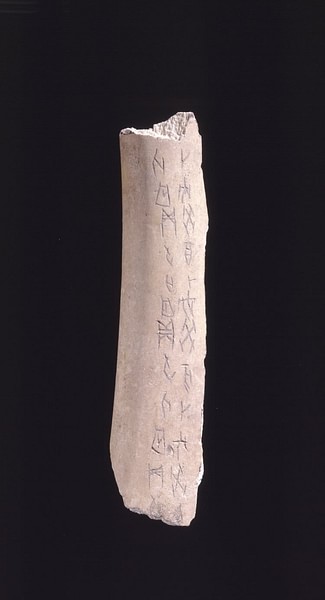
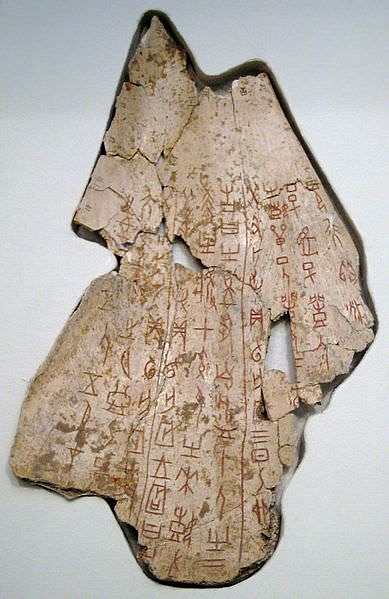

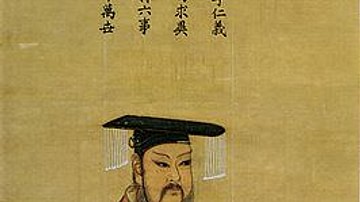
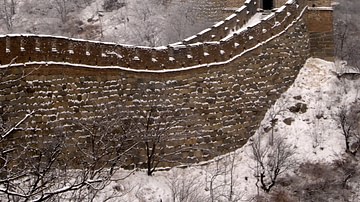
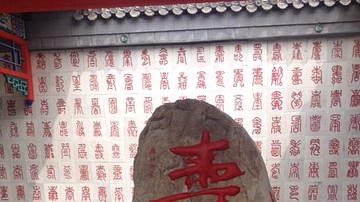
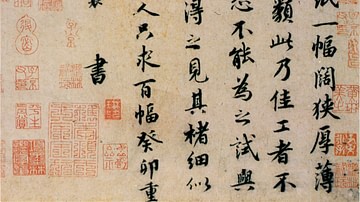
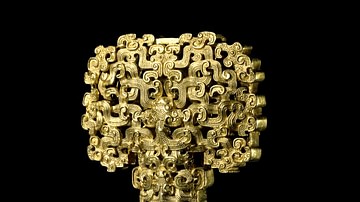
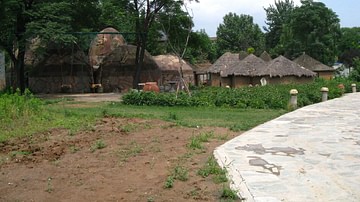




![The Oracle Bone Inscriptions from Huayuanzhuang East: Translated with an Introduction and Commentary (Library of Sinology [LOS], 3)](https://m.media-amazon.com/images/I/41RUMKGqseL._SL160_.jpg)